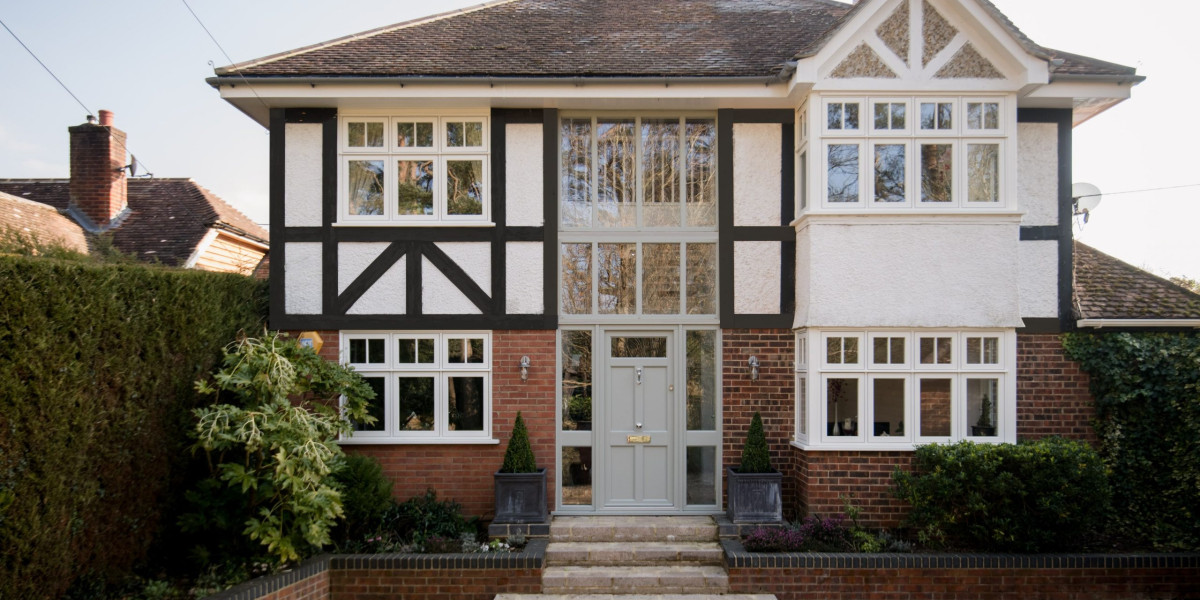Imagine stepping into your home after a long day, greeted by clean, fresh air that feels invigorating. You might not realise it, but the secret to this refreshing atmosphere could lie in an energy recovery ventilator (ERV). As homes become more airtight for energy efficiency, proper ventilation has never been more crucial. An ERV can help balance this equation by bringing in fresh outdoor air while efficiently managing heat and humidity levels. But what exactly does an energy-recovery ventilator do? How can it transform your living space into a haven of comfort and well-being? Let’s explore how these innovative systems work and why they’re becoming essential for modern households looking to improve indoor air quality without sacrificing energy efficiency.
The Importance of Proper Ventilation in Modern Homes
Proper ventilation is a vital aspect of any modern home. It goes beyond merely opening windows; it ensures that fresh air circulates while stale air and indoor pollutants are expelled. This balance is crucial for maintaining a healthy living environment.
Poor ventilation can lead to various issues, including mould growth, stagnant odours, and an increase in airborne allergens. These problems not only affect comfort but also pose health risks to occupants. Adequate airflow helps mitigate these concerns by reducing humidity levels and improving overall air quality.
In today’s tightly sealed homes designed for energy efficiency, relying solely on natural ventilation isn’t enough. Mechanical systems like energy-recovery ventilators are essential tools that enhance the effectiveness of your home’s airflow system, ensuring you breathe easier every day while keeping temperatures stable throughout the year.
The Science Behind Heat and Moisture Exchange Technology
Heat and moisture exchange technology is a marvel of modern engineering, designed to optimise indoor air quality while maintaining energy efficiency. This innovative system captures the heat from outgoing stale air and transfers it to incoming fresh air. As a result, your home stays comfortable without wasting energy.
The process relies on a core made of specially designed materials that facilitate this transfer. When warm, moist air leaves your home, its temperature and humidity levels are passed through the exchanger without mixing with incoming air. This ensures that you enjoy fresh outdoor breezes while minimising temperature fluctuations indoors.
Moreover, during colder months, this technology helps retain valuable warmth inside your space. It not only enhances comfort but also reduces reliance on heating systems. This dual-action capability makes an energy-recovery ventilator an essential component for any eco-conscious homeowner seeking optimal performance in their living environment.
Reducing Allergens and Humidity for a Healthier Environment
Indoor air quality can significantly impact your health. An energy-recovery ventilator (ERV) plays a crucial role in reducing allergens like dust, pollen, and pet dander. By continuously exchanging stale indoor air with fresh outdoor air, the ERV helps to minimise airborne irritants that can trigger allergies or respiratory issues.
Humidity levels are another critical factor affecting comfort and health. High humidity can lead to mould growth and increased dust mites, both of which worsen allergy symptoms. The heat exchange process within an ERV balances moisture levels by transferring some humidity from incoming air to outgoing air. This results in optimal indoor humidity without compromising fresh airflow.
Living in a healthier environment is easier when you manage allergens and humidity effectively. With its advanced filtration capabilities and moisture control features, an energy-recovery ventilator creates a fresher atmosphere that promotes overall well-being for you and your family.
Energy Efficiency Benefits That Cut Down Power Consumption
Energy-recovery ventilators (ERVs) are game-changers for energy efficiency in modern homes. By transferring heat and moisture between incoming and outgoing air, these systems reduce the load on heating and cooling equipment. This means your HVAC system doesn’t work as hard, leading to lower energy bills.
Using an ERV can significantly decrease power consumption throughout the year. During the winter months, they preheat incoming air with the warmth from stale indoor air. In summer, they cool it down using conditioned indoor air. This ability to balance temperatures saves homeowners money while maintaining comfort.
Moreover, many ERVs operate quietly and efficiently without drawing excess power. They continuously exchange fresh outdoor air while exhausting stale indoor air at a fraction of the energy cost compared to conventional ventilation options. Adopting this technology not only enhances home comfort but also promotes sustainable living by minimising overall energy use.
How an Energy Recovery Ventilator Improves Indoor Air Quality
Indoor air quality often goes overlooked, yet it plays a crucial role in our health and comfort. An energy recovery ventilator (ERV) actively works to enhance this aspect of your home environment. By continuously exchanging stale indoor air with fresh outdoor air, ERVs help maintain optimal levels of oxygen.
Moreover, these systems filter out contaminants like dust, pollen, and other allergens. This filtration process results in cleaner air circulating throughout your living spaces. With reduced airborne irritants, individuals with allergies or respiratory issues can find significant relief.
Moisture control is another key benefit of an ERV. It helps regulate humidity levels by transferring moisture between incoming and outgoing airflow. This balance prevents mould growth while ensuring that the air feels comfortable year-round. Your home's atmosphere becomes healthier for everyone inside.
Comparing ERV Systems with Traditional Ventilation Options
Energy-recovery ventilators (ERVs) offer a modern alternative to traditional ventilation methods. While older systems often rely on simple exhaust fans, ERVs efficiently exchange stale indoor air with fresh outdoor air. This process not only maintains airflow but also minimises energy loss.
Traditional systems can lead to significant temperature fluctuations inside your home. In contrast, ERVs transfer heat and moisture between incoming and outgoing air streams. This means that your heating or cooling system won’t have to work as hard to maintain comfortable temperatures throughout the year.
Another key difference is humidity control. Traditional ventilation might inadvertently introduce excess moisture during humid months or dry out spaces in winter. With an ERV, you achieve balanced humidity levels, promoting better indoor air quality without compromising comfort or energy efficiency.
The Role of ERVs in Maintaining Balanced Airflow Year-Round
Energy-recovery ventilators (ERVs) play a crucial role in ensuring balanced airflow throughout your home, regardless of the season. By continuously exchanging stale indoor air with fresh outdoor air, ERVs maintain optimal ventilation levels. This exchange is vital for preventing areas within your home from becoming stuffy or overly humid.
During winter months, ERVs help retain heat while introducing cool, fresh air. In contrast, during summer, they work to remove excess humidity without sacrificing comfort. This balance is essential for creating a pleasant living environment year-round.
Moreover, consistent airflow helps prevent issues like mould growth and unpleasant odours associated with stagnant air. By promoting proper ventilation throughout every room in your house, energy-recovery ventilators enhance overall air quality and contribute to a healthier atmosphere for you and your family.
How Quiet Operation Enhances Home Comfort
A peaceful home environment is essential for relaxation and productivity. Energy-recovery ventilators (ERVs) are designed with quiet operation in mind, allowing you to enjoy fresh air without disruptive noise. This makes them an ideal choice for bedrooms, living rooms, or any space where tranquillity is a priority.
Unlike traditional ventilation systems that can be loud and distracting, ERVs use advanced technology to minimise sound levels. They work efficiently in the background, ensuring your indoor environment remains serene while still exchanging stale air for fresh outdoor breezes.
The gentle airflow from an ERV contributes to a comfortable atmosphere year-round. You can breathe easily knowing that you're improving air quality without sacrificing peace at home. This blend of efficiency and comfort sets energy-recovery ventilators apart as a smart choice for modern living spaces.
Installation Tips and Maintenance for Long-Term Performance
Installing an energy-recovery ventilator requires careful planning. Start by choosing a suitable location, ideally near your HVAC system, for easier integration. Ensure that the unit is accessible for maintenance and filter changes. Follow the manufacturer's guidelines closely to avoid common installation pitfalls.
Regular maintenance is crucial for optimal performance. Check filters monthly and replace them as needed to keep airflow efficient. Inspect the ducts periodically for any obstructions or leaks that may hinder air exchange.
Additionally, ensure that the fans are functioning properly and clean them if dust builds up over time. Keeping an eye on humidity levels will also help maintain efficiency and comfort in your home environment. A little attention goes a long way in ensuring your energy-recovery ventilator operates smoothly year after year.
Eco-Friendly Advantages of Energy Recovery Systems
Energy-recovery ventilators (ERVs) are not just about comfort; they also play a vital role in protecting our environment. By reusing energy from stale indoor air, ERVs significantly reduce the amount of energy required for heating and cooling. This means less demand on power plants, which often burn fossil fuels, resulting in lower greenhouse gas emissions.
In addition to conserving energy, these systems improve overall home efficiency. An efficient home requires fewer resources to maintain a comfortable climate. With reduced reliance on traditional HVAC systems, homeowners can enjoy both savings on utility bills and a smaller carbon footprint.
Moreover, many ERV units are designed with eco-friendly materials and features that support sustainable living. Choosing an energy recovery system is not just beneficial for your health; it’s also an investment in the planet's future by promoting cleaner air and responsible resource use.
Conclusion
An energy recovery ventilator is a smart investment for any modern home. It offers more than just fresh air; it enhances your living space in numerous ways. With its advanced technology, you can enjoy cleaner and healthier indoor air. The benefits extend beyond comfort. By improving energy efficiency, these systems can lead to significant savings on utility bills over time. They help maintain the perfect balance of temperature and humidity while filtering out allergens that may affect your health. Choosing an energy-recovery ventilator means prioritising both wellness and sustainability in your home environment. As we become more conscious of our ecological footprint, embracing such innovations is essential for a greener future. Investing in an ERV not only supports better living but also contributes positively to the planet.
FAQs
What is an energy recovery ventilator (ERV)?
An energy recovery ventilator is a mechanical ventilation system that exchanges stale indoor air with fresh outdoor air. It transfers heat and moisture between the two airflow streams, making it energy efficient.
How does an ERV help reduce allergens in my home?
By constantly circulating fresh air, an ERV helps filter out dust, pollen, mould spores, and other allergens. This creates a healthier living environment for you and your family.
Can I install an ERV myself?
While some homeowners may attempt DIY installation, it's recommended to hire a professional for optimal performance. Proper placement and integration into existing HVAC systems are crucial for effective operation.
Are there maintenance requirements for my ERV?
Yes! Regular cleaning of filters and inspection of the unit ensures longevity. Most manufacturers recommend checking or replacing filters every few months to maintain efficiency.
What are the long-term cost savings associated with using an ERV?
Energy-recovery ventilators can significantly lower heating and cooling costs by reducing the workload on your HVAC system. The initial investment often pays off through lower utility bills over time.
Related Business Listings |









